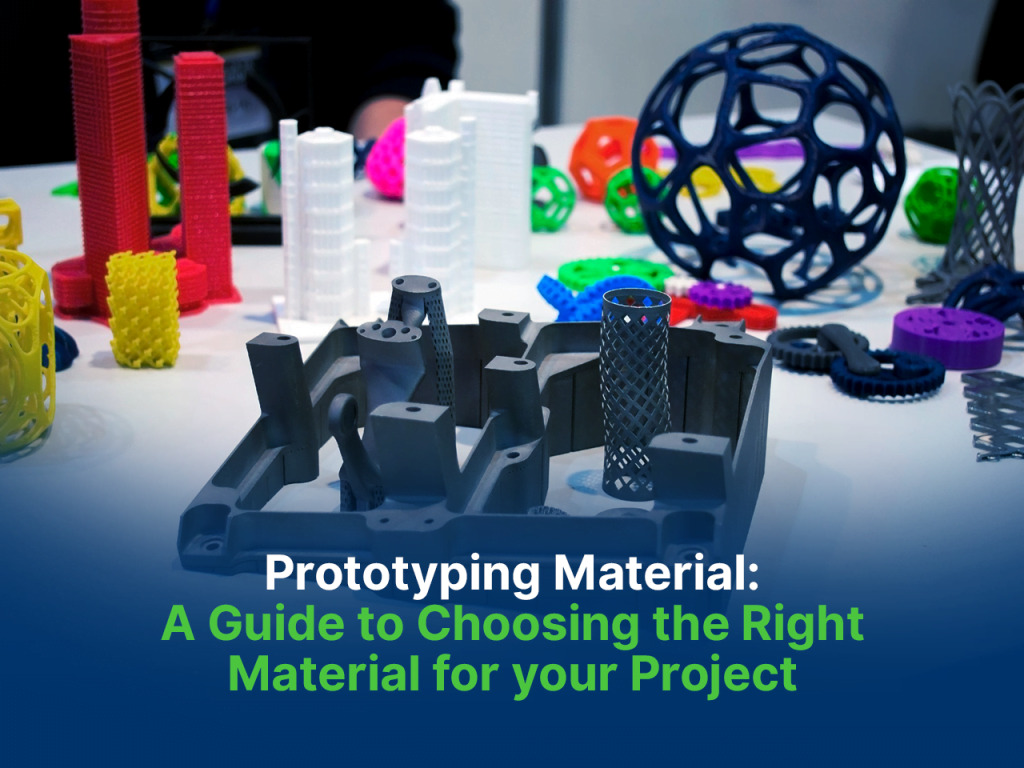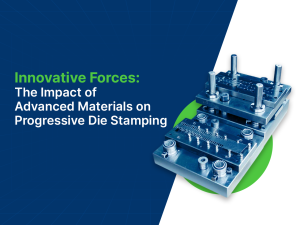Introduction
Prototyping is an essential phase in the product development process. Whether you’re working on a new gadget, a piece of furniture, or an innovative medical device, the choice of prototyping material can significantly impact the success of your project. Prototyping involves creating scaled-down models or mock-ups of a product idea to test, refine, and validate concepts. Prototypes serve multiple purposes: they allow designers to evaluate functionality, assess user experiences, and uncover design flaws early in the development process.
Furthermore, prototypes facilitate communication among team members, stakeholders, and investors by providing tangible representations of ideas. Through successive iterations, prototyping reduces risk, saves time, and helps steer the project towards a successful final product that aligns with user needs and project goals. In this guide, we will explore the importance of selecting the right material for your prototypes and delve into various materials commonly used in prototyping.
The Significance of Prototyping Material
Prototyping serves as a bridge between your concept and the final product. It allows you to test and refine your design, evaluate functionality, and gather user feedback. The material you choose for your prototype can make or break this crucial stage of development. It plays a pivotal role in several key aspects:
- Prototype Functionality Testing:
- The selected material directly impacts how well your prototype functions.
- Different materials have varying properties, such as tensile strength, flexibility, and thermal conductivity.
- Choosing a material that closely matches the intended final material ensures that your prototype behaves realistically during testing.
- This is crucial for identifying and addressing design flaws and functional issues early in the development process.
- Realistic Representation with Prototype:
- A prototype’s primary function is to provide a tangible representation of the final product.
- The choice of material for the prototype can significantly affect how closely the prototype resembles the end product in terms of aesthetics, texture, and even weight.
- Realistic prototypes are invaluable for user testing, market research, and investor presentations, as they provide a clear vision of what the final product will be like.
- Cost Management via Prototyping:
- Choosing the appropriate prototype material can result in cost-effective outcomes.
- Utilising materials that closely mirror the final production materials can help circumvent unnecessary revisions and repetitive iterations.
- This, in turn, eliminates the necessity to start prototypes anew, a process that can consume significant time and resources.
- Prototype Manufacturability:
- It’s essential to carefully think about the manufacturing methods intended for the final product.
- The prototype material must align with these methods.
- Employing identical or similar manufacturing processes for both the prototype and eventual production ensures that insights gained during prototyping seamlessly apply to the final product.
- Risk Mitigation:
- Selecting the right prototype material helps mitigate risks associated with production.
- By identifying potential manufacturing challenges or material limitations early in the development process, you can make informed decisions and adjustments, reducing the risk of costly setbacks or delays during full-scale production.
- User Experience Testing with Prototype:
- For consumer products, the choice of material significantly impacts the user experience.
- The tactile qualities, ergonomics, and overall feel of the prototype can influence user preferences and feedback.
- Therefore, using materials that mimic the final product’s touch and feel is essential for gathering accurate user insights and refining the design accordingly.
- Regulatory Compliance:
- Certain industries, such as healthcare and aerospace, have stringent regulatory requirements.
- Prototyping with materials that meet or closely match these regulatory standards ensures that your product is more likely to pass certification and compliance testing, saving time and resources in the long run.
- Marketability and Investor Confidence:
- A well-crafted prototype with the right materials can be a powerful tool for attracting investors and gaining market traction.
- A realistic and aesthetically pleasing prototype can instil confidence in potential investors, partners, and customers, helping secure funding and building anticipation for the final product.
- Material Specific Testing:
- Depending on the project, certain material-specific tests may be necessary.
- For instance, if your final product will be exposed to extreme temperatures, it’s essential to prototype with a material that can withstand those conditions.
- Prototyping with the right material allows for accurate testing of material-specific factors like heat resistance, chemical resistance, or wear and tear.
- Environmental Impact:
- In today’s environmentally conscious world, the environmental impact of materials cannot be overlooked.
- Choosing sustainable and recyclable materials for your prototypes aligns with sustainability goals and demonstrates a commitment to eco-friendliness, which can be a significant selling point for certain products and markets.
In conclusion, the choice of prototype material is a multifaceted decision that impacts functionality, cost, realism, manufacturability, environmental considerations, risk mitigation, user experience, regulatory compliance, and the overall marketability of your product. Making a well-informed material selection is crucial for achieving success in the highly competitive world of product development.
Characteristics of Prototype Material
Prototyping materials exhibit a range of characteristics that influence their suitability for specific projects. Here are some key characteristics to consider when selecting prototyping materials:
- Strength and Durability: The material’s ability to withstand mechanical stress, impacts, or environmental conditions is crucial for functional prototypes.
- Flexibility: The material’s ability to withstand mechanical stress, impacts, or environmental conditions is crucial for functional prototypes.
- Weight: The weight of the material can affect the prototype’s overall feel and functionality, particularly in applications like aerospace or automotive design.
- Thermal Conductivity: If your prototype needs to manage heat or cold, the material’s thermal properties are essential.
- Chemical Resistance: For prototypes exposed to specific chemicals or environments, resistance to corrosion or chemical reactions is vital.
- Size and Form: Consider whether the material is available in the size and form (sheets, rods, powders) that meet your project’s requirements.
- Electrical Parameters: If your prototype includes electronic components,, the material’s electrical conductivity or insulating properties are crucial.
- Magnetic Parameters: For projects involving magnetic components or fields, consider the material’s magnetic characteristics.
- UV Resistance: Materials exposed to sunlight or UV radiation may require resistance to prevent degradation.
- Sound and Vibration Characteristics: Materials used in acoustic or vibration-related applications should have suitable acoustic and vibration damping properties.
- Transparency or Opacity: The level of transparency or opacity can be crucial for prototypes involving displays, lenses, or visual elements.
- Cost: The price of the material can significantly impact your project’s budget, so it’s essential to balance cost with other characteristics.
- Ease of Prototyping: Some materials are better suited for specific prototyping methods, such as injection molding, 3D printing, etc.
- Ease of Machining: Consider how easily the material can be shaped, cut, or molded to create your prototype’s desired form.
- Availability and Recyclability: Ensure that the chosen material is readily available and accessible for your prototyping needs. Sustainability concerns may lead you to select materials that are recyclable or have a minimal environmental footprint.
Choosing the right combination of these characteristics based on your project’s specific needs is vital for successful prototyping and eventual product development.
Most Common Prototype Materials to make a prototype
Common prototype materials encompass a diverse range of options, each suitable for specific applications and industries. Here are some frequently used prototype materials:
- Plastics
- Plastics are a versatile category of prototype materials widely used due to their adaptability and cost-effectiveness.
- Various types of plastics, such as ABS, PLA, polycarbonate, and acrylic, offer different properties to suit specific applications.
- ABS is durable and often employed in functional prototypes.
- PLA, biodegradable and easy to 3D print, is ideal for concept models.
- Polycarbonate’s strength makes it suitable for robust prototypes.
- Acrylic, transparent and visually appealing, is used for visual prototypes and displays.
- These plastics can be machined, injection molded, or 3D printed, offering a wide range of possibilities for creating prototypes across industries, from consumer goods to healthcare devices, aerospace, packaging design, consumer electronics, architecture, toys and games, industrial equipment, environmental products, and custom fabrications.
- Plastics are used to create prototypes of consumer products like electronics, toys, and appliances to assess form and functionality.
- Prototyping with plastics helps design vehicle components, interiors, and exterior parts for performance and aesthetics.
- Metals
- Metals like aluminium, steel, and titanium are chosen for their strength and durability.
- Metals are indispensable in prototype development due to their strength and durability.
- Aluminium, steel, and titanium are commonly used, especially in aerospace, automotive, and industrial prototypes.
- Their robustness ensures that prototypes can withstand mechanical stress and environmental conditions.
- Rubber and Silicone
- These materials are ideal for prototypes involving seals, gaskets, or flexible components, common in automotive and medical industries.
- Their unique properties include elasticity, flexibility, and resistance to heat and chemicals.
- This makes them perfect for prototypes of gaskets, seals, and components requiring shock absorption or vibration dampening.
- They are crucial in the automotive sector for testing vehicle parts, and in the medical field for creating prototypes of medical devices and prosthetics, ensuring both safety and functionality.
- Ceramics
- Ceramics are chosen for prototypes requiring high-temperature resistance and electrical insulation, such as electronic components.
- They’re employed in industries like electronics, aerospace, and medical devices to prototype components that require these characteristics.
- Ceramic prototypes ensure functionality and reliability under extreme conditions, such as in the production of heat-resistant electronic parts or medical implants, where electrical isolation and biocompatibility are crucial.
- Bioplastics
- These environmentally friendly plastics are made from renewable sources like cornstarch, sugarcane, or potato starch, and are suitable for sustainable product prototypes.
- They are used in prototype development with an environmental focus.
- Bioplastics are versatile and can mimic the properties of conventional plastics.
- They find applications in creating prototypes for eco-friendly packaging, disposable cutlery, and various consumer products, aligning with the growing demand for environmentally responsible materials and products.
- Elastomers
- Elastomeric materials, like rubber, are used for prototypes requiring elasticity, such as medical devices and industrial components.
- They can withstand deformation and return to their original shape, making them ideal for prototypes of seals, gaskets, and shock-absorbing components in automotive, industrial, and medical applications.
- Elastomers like rubber offer durability and resistance to wear, making them crucial for prototypes needing long-term performance and flexibility.
- Polyurethane Resins
- These resins can mimic a wide range of materials and are commonly used in model-making, visual prototypes, and functional testing.
- They offer the ability to simulate a wide range of properties, from rigid to flexible, and can replicate the appearance of various materials.
- They are known for their ease of use and ability to capture intricate details, making them popular in industries like automotive, consumer goods, and healthcare.
- These resins enable designers to create realistic and functional prototypes, facilitating effective product development.
- Composite Materials
- Composite materials are engineered combinations of different materials to achieve specific performance characteristics.
- They are crucial in prototype development for applications that require a balance of strength, lightweight properties, and durability.
- Composites like fiberglass and carbon fiber combine the properties of different materials to provide strength and lightweight characteristics, often used in aerospace and sports equipment prototypes.
- Composite prototypes excel in scenarios where the strength-to-weight ratio is critical, making them ideal for creating lightweight yet sturdy components in various industries.
- Thermoplastics
- Thermoplastics are a versatile class of materials that soften when heated and harden when cooled, making them ideal for prototyping using methods like injection molding, 3D printing, and CNC machining.
- They offer several advantages, including ease of processing, recyclability, and a wide range of properties.
- Different thermoplastics, such as ABS, PET, and PEEK, provide varying levels of strength, heat resistance, and chemical resistance, making them suitable for applications across industries like automotive, healthcare, and consumer goods. Thermoplastics are favored for their ability to create functional and precise prototypes quickly.
- Glass
- Glass is used in prototypes requiring transparency, durability, and versatility such as displays or optical components.
- It’s commonly used in industries such as optics, electronics, and architecture.
- Glass prototypes are crucial for optical component testing, like lenses and displays, where clarity and precision are essential.
- They also find application in architectural models and specialised products requiring transparency and resistance to environmental factors.
- While fragile, glass prototypes offer a distinct advantage in visual clarity and precision that other materials may not achieve.
- Concrete
- For architectural and construction prototypes, concrete is employed due to its structural integrity and moldability.
- It’s favored for its durability, strength, and ability to mimic real-world conditions.
- Concrete prototypes help architects and builders visualize designs, test structural integrity, and assess aesthetics.
- Additionally, they can assist in understanding how concrete structures will interact with various environmental factors.
- Concrete prototypes serve as invaluable tools for planning and refining construction projects, ensuring they meet safety, aesthetic, and functional requirements.
- Foam
- Foam materials, including foam boards and foam core, are lightweight and suitable for architectural models, packaging, and product design prototypes.
- They are often used in architecture, packaging design, and model making.
- Foam is easily cut, carved, and sanded to create intricate shapes and structures. It’s especially suitable for creating detailed architectural models, product packaging prototypes, and visual displays.
- Foam’s ease of manipulation and cost-effectiveness make it a popular choice when precision and aesthetics are key considerations in the prototyping process.
- Machinable Wax
- Machinable wax is a specialized prototyping material known for its ease of machining.
- It’s typically used for creating intricate and detailed prototypes, molds, and patterns.
- Machinable wax is soft and can be carved, milled, or turned with CNC machines and other machining tools, making it ideal for precision work.
- Its main advantage is that it allows for the creation of prototypes with fine details and complex geometries, which are difficult to achieve with many other materials.
- This makes it valuable in industries like jewelry design, dental prosthetics, and engineering.ut.
- Acrylic Glass (Plexiglass)
- Plexiglass, also known as acrylic glass or PMMA (Polymethyl methacrylate), is a versatile transparent thermoplastic material used in various prototyping applications.
- It is valued for its optical clarity, lightweight nature, and ease of fabrication.
- Plexiglass prototypes find applications in industries such as electronics, signage, and product design.
- This material can be laser-cut, bent, bonded, and polished to create visually appealing and precise prototypes, often used for visual models, display cases, protective covers, and components requiring transparency and durability.
- Paper and Cardboard
- Paper-based materials are used for rapid prototyping and packaging design, often created through laser cutting or 3D printing.
- Paper and cardboard are economical and accessible prototyping materials, known for their versatility in creating quick and low-cost prototypes.
- Paper can be easily cut, folded, and glued, while cardboard provides more structural support. Laser cutting and 3D printing on paper-based materials are common techniques.
- These materials are valuable for early-stage design exploration, mock-ups, and initial user testing due to their affordability and ease of manipulation.
Choosing the Right Prototyping Material
Selecting the appropriate material for your project is a critical decision that can significantly impact its success. Here’s a step-by-step guide to choosing the right material:
- Functional Requirements: What properties must the material possess to meet the functional needs of your prototype?
- Define Project Requirements: Clearly outline the specific requirements of your project. Consider factors like strength, durability, aesthetics, cost, and any unique properties needed.
- Understand Material Properties: Research and understand the properties of available materials. Consider strength, flexibility, thermal conductivity, and other relevant characteristics.
- Budget Considerations: Can you afford the material within your budget for prototyping? Evaluate your budget constraints. Some materials may be more cost-effective for your project than others.
- Prototyping Method: Determine the prototyping method you’ll use (e.g., injection molding, 3D printing, CNC machining). Some materials are better suited to certain techniques.
- Functional Needs: Assess whether the material can fulfil the functional requirements of your prototype. Will it withstand the intended use and environment?
- Aesthetic Requirements: Consider how the material’s appearance aligns with the desired look and feel of your prototype. Aesthetics can be crucial for user testing and presentations.
- Environmental Impact: If sustainability is a concern, opt for materials with eco-friendly properties or recyclability.
- Regulatory Compliance: In industries with strict regulations (e.g., medical or aerospace), ensure the chosen material complies with relevant standards.
- Manufacturability and Lead Times: Check if the material is readily available and if lead times for procurement align with your project timeline.
- Material Testing: If necessary, conduct material testing to confirm that it meets your project’s requirements.
- Consult Experts: Seek advice from experts or colleagues experienced in your field for material recommendations.
- Iterate: if necessary Be open to adjusting your material choice if initial prototyping reveals unforeseen issues or limitations.
- Documentation: Maintain thorough records for material selection, including properties, sources, and any test results for future reference.
By following these steps and carefully considering the specific needs of your project, you can make an informed decision when choosing the right material for your prototype, setting the stage for a successful product development process. Choosing the right prototyping material is a crucial step in the product development process. It impacts not only the functionality and appearance of your prototype but also your project’s overall success. By carefully evaluating your project’s requirements and considering the properties of various materials, you can make informed decisions that will lead to a successful prototype and, ultimately, a successful product.

Engineering
Manufacturing
Prototyping
Software Development
AI for Manufacturing
Engineering
Manufacturing
Prototyping
Software Development
AI for Manufacturing








